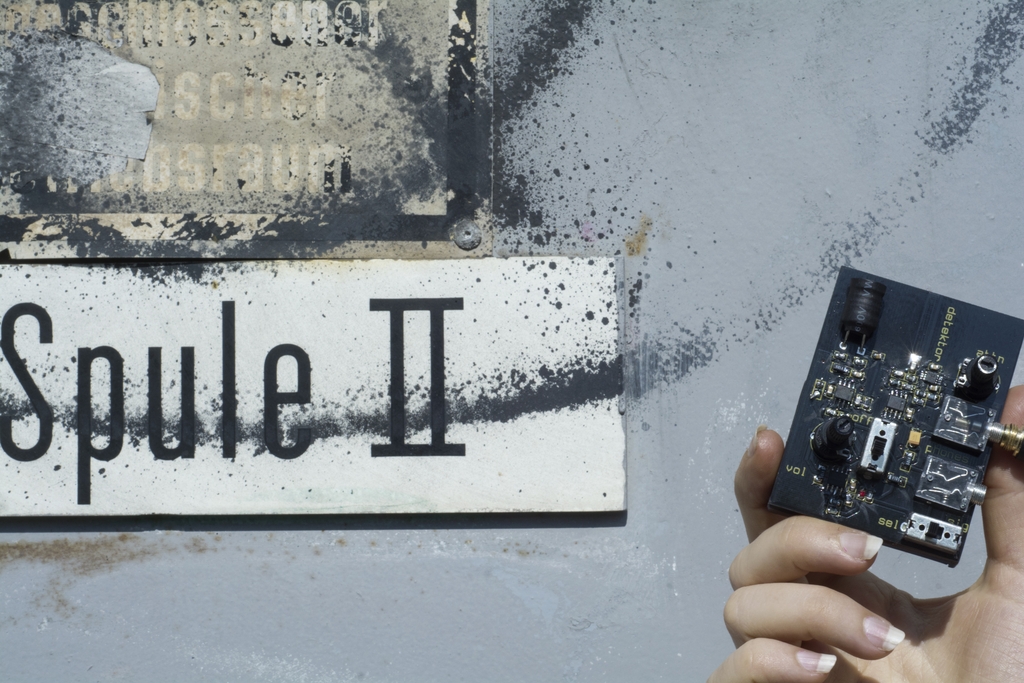detektor

The detektor from micro_research makes audible both low and high frequency (LF and HF) electromagnetic emissions from all manner of man-made signal-sources such as power lines, tram lines, all electronic gadgets and machines, 2.4 GHz WIFI, cellphones, communication beacons and many more.
Developed as part of a project with Shintaro Miyazaki ( http://www.digicult.it/news/mapping-the-electomagnetism-detektors-by-martin-howse-and-shintaro-miyazaki/ ) the detektor was designed to make it as easy as possible to listen and record (using a digital recording device not included) wide spectrum electromagnetic signals. A coil provides a close-up window into the inaudible transmissions from all electronic devices and a built-in antenna allows access to higher frequency wide band emissions. You can switch headphone monitoring mini-jack between these, adjust volume, attenuate the high frequency signal and record (left and right) both LF and HF. The detektor runs from 3x AAA batteries.
The detektor differs from other electromagnetic sniffer options such as SOMA's Ether or the Elektrosluch in offering both "inductive" sniffing, and wide-band high frequency detection. It can be used to listen closely to devices and experience wider electromagnetic ecologies.
Image credits: Ioana Vreme Moser
Order
Price: 82 euros (with free Europe, Canada, Japan shipping with tracking number).
Sold out.


